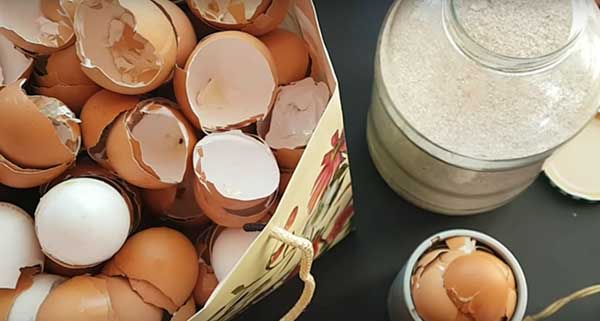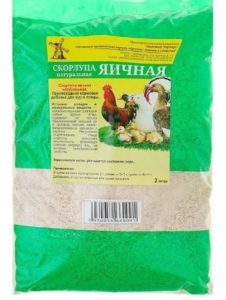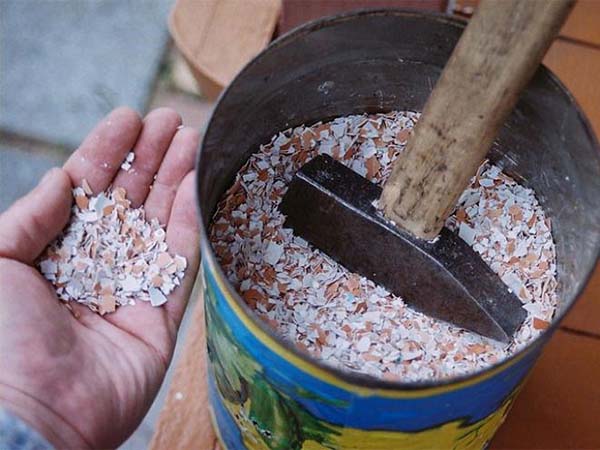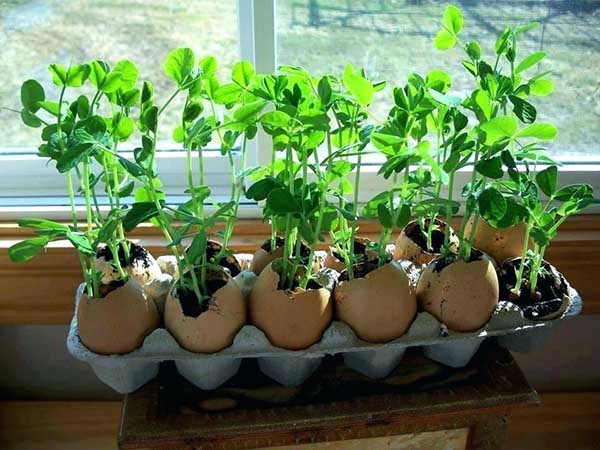Eggshells as plant fertilizer and pests (slugs and snails): how to use them correctly
Are you thinking about using eggshells, want to know how to use them as a fertilizer, deoxidizer or pest control agent?
Indeed, many gardeners who adhere to the rules of organic farming prefer to use natural fertilizers (manure, humus, compost, wood ash, onion peel).
However, is it possible to include eggshells in the list of truly effective organic fertilizers?
Next, you will find out whether it is worth collecting eggshells in winter, how it is useful, how to use it correctly in the garden, so that its use has a real effect (albeit small).

Content
What eggshells contain and what effect does it have on the soil and plants
Eggshells for the most part (90-95%) consists from calcium carbonate (chemical formula - CaCO3). Also, the shell contains many other useful macro- and microelements: phosphorus, zinc, copper, iron, manganese.
Accordingly, it can be concluded that the shell is suitable for use as calcium fertilizer and soil deoxidizer (to reduce its acidity).
However, do not rush to bring it in for digging, sprinkle the beds, make an infusion on water!
The fact is that shell It has enough solid (dense) structure, which means will dissolve (decompose) in the soil very and very long time.
For example, dolomite flour begins to act (= deacidify the soil) six months to a year after making, and here shell - only after 5 years or more.
Also calcium carbonate is insoluble in water, and insoluble salts the plant does not assimilate a-priory.
In other words, it is completely useless to scatter eggshells (medium-large fraction) on top of the soil in the garden, put them in the holes when planting seedlings, insist in water (even boiling water) and water at the root if you want to use the shell as a fertilizer or deoxidizer.
However, the above does not mean that eggshells are garbage that should not belong in your garden.
Opinion: "It will not cause harm, but the benefit (albeit minimal) will be over the years."
You just need to use the shell correctly (and prepare it for use in advance), which will be discussed later.
Thus, eggshells are resorted to for:
- neutralization of acidic soils;
- enrichment of the soil with calcium (plant feeding);
- improving the structure of the soil (loosening);
- protection against slugs and snails.
However! You must understand that eggshell - this is not a super remedy... Roughly speaking, using eggshells is about recycling household waste organically for the benefit of your soil and plants.
Using eggshells as fertilizer and soil deoxidizer
In the last paragraph, we found out that simply crushed eggshells with a crush or hands can be used as fertilizer or deoxidizer (to reduce acidity) there is no point: it will not begin to decompose and interact with the soil very soon.
However, there are a few things you can do to increase its solubility = effectiveness.
First of all, you need to grind the shells into flour (turn into a dusty state).
For example, you can grind with coffee grinders or a meat grinder.

Interesting! Shredded eggshells can be found on sale in garden stores (literally at 5 rubles per kg).

Egg shells crushed into dust, now you can use for introduction into the soil for digging with the aim of decrease acidity, however, the effect of its use will still be sufficiently delayed in time (dolomite flour acts faster).
Important! The average shell weight of one egg is 5-7 grams.
To deoxidize one 1 square meter of soil, 200-500 gr. calcium carbonate, in other words, from 30-100 eggs.
This is the question of the appropriateness of use.
If you want to use the shell as a calcium fertilizerthen you need convert calcium salts into a soluble form, for example, with acetic acid. Namely 100 gr. the shells crushed into flour, you need to pour 1 liter of 9% vinegar, insist from several hours to a day, then dilute the resulting infusion solution with another 10 liters of water. Spill holes before planting seedlings or feed afterwards, i.e. during the growing season.
What plants can I use eggshells to feed?
- Calcium fertilizers are used for prevention top rot of tomato fruit, feeding other nightshades (peppers, eggplant), as well as cabbage.
- Also, calcium is necessary for everyone stone fruit trees (cherry, sweet cherry, apricot).
Eggshells as a baking powder
Crushed shells can be used to improve soil structure, in other words, it's great loosening agent (especially if your soil is heavy and clayey).
And you can also add eggshells to the compost, but be sure to be ground, otherwise it simply will not dissolve. Ground shells are very fond of earthworms.

The use of eggshells against pests (slugs, bears)
Many gardeners use eggshells with relative success to protect against pests:
Note! It is necessary to take exactly the hand-crushed shell, that is, the medium-coarse fraction (about 0.5 to 0.5 cm).
- So, sprinkling eggshells around the planted seedlings cabbage, strawberry bushes (garden strawberries), hosts can become a protective barrier for snails and slugs.

Unfortunately, when the shell cakes and stops stabbing the abdomen, slugs and snails perfectly overcome this former barrier.
- In the same way, the shell can be used (poured into the holes) to protect the seedlings of tomatoes and peppers. from the bear.
- Some put in the hole when planting potatoes from the wireworm.
However! If the shell really has an effect on slugs and snails (it is an obstacle), then on a bear and a wireworm it is rather self-soothing (although it helps some summer residents).
Reviews and advice from gardeners on the use of eggshells
- “The eggshells are best fed to the hens. They will perfectly process everything and the processed one can already be applied to the soil. "
- “I always put the shells in the ground, but not as a top dressing, but as protection from the bear. I hope that while the seedlings are small, the bear will not be able to cut through the sprout among the shell. Rather, it is complacency than an effect, but you have to defend yourself somehow)))) "
- “I have had the shells in the compost for 8 years. It just turned yellow and didn't dissolve. "
"The shells of a large fraction can be pecked by birds!"
Can I use boiled egg shells?
As a rule, most summer residents are of the opinion that it would be better to use shells from raw eggs.
However, when cooking, the calcium from the shell does not go anywhere. If calcium was dissolved in water, then during cooking the shell would dissolve and the boiled eggs would be without it.
Accordingly, you can use shells from both boiled and raw eggs with equal success.
Can the shells be used as drainage?
It is possible, but when it cakes, the effect will be the opposite. Therefore it is better not necessary.
Much more efficient to use perlite or vermiculite, air exchange in the soil when using it in comparison with the shell is simply not comparable.
Will eggshells protect seedlings from blacklegs?
No, it won't, it's some very strange myth.
Can seedlings be grown in eggshells?
It is possible, but to speak seriously about the use of eggshells as seedling containers ... somehow it does not work out. Sowing seeds in shells for fun is another matter (for example, to surprise a child).

We hope you understand that eggshells can indeed be used as a fertilizer (= calcium source) and deoxidizer, as well as to loosen the soil and protect against pests, but you should not expect any serious benefits. The usefulness of the shell for soil and plants is quite low, but it does not bring harm either.

